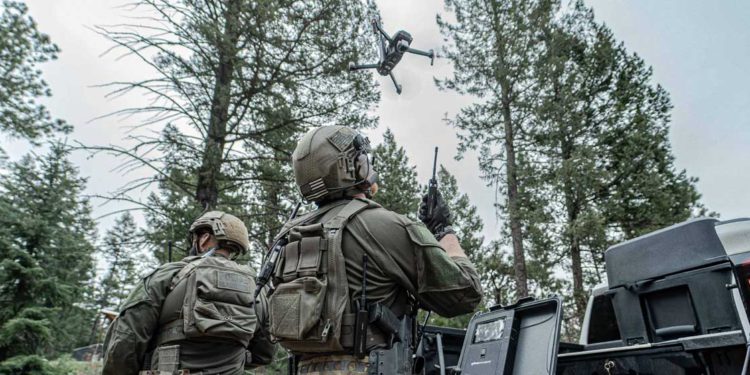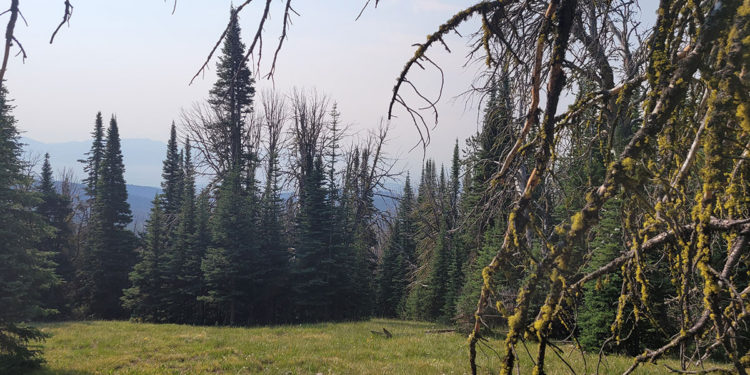
How goTenna’s Aspen Grove overmatched the competition in the NAVWAR NetANTX
Each branch of the U.S. military has a technological research and development (R&D) arm dedicated to advancing and strengthening the organization through the adoption of innovative and new technologies. Though the military conducts its own testing and deployment of novel technologies in-house, the U.S. Department of Defense (DoD) also recognizes

How Tough Stump’s ATOS solution is enhancing ATAK’s GPS tracking capabilities for the warfighter
When the Android Tactical Assault Kit (ATAK) was released a decade ago, its situational awareness and communications capabilities completely transformed how military, law enforcement, and emergency response teams coordinate and communicate during their missions. For more than 10 years, ATAK has been enabling any warfighter with an Android device to

Infographic | What’s the difference between goTenna Mesh and goTenna Pro X?
goTenna Mesh is designed for your personal use during outdoor trips, international travel, emergency preparedness, festivals, and crowded events. Check the full tech specs for goTenna Mesh here. Meanwhile, goTenna Pro X is designed for professional teams who require a product that is more powerful, operational, and ruggedized than goTenna

Empowering a more effective, proactive government with data
In today’s increasingly network-enabled, digitally-transformed government, one of the greatest resources that the government has at its disposal is data. As David Egts, the Chief Technologist for North America Public Sector at Red Hat recently explained in an interview, “It’s clear that data has the power to revolutionize the government.

Five ways mobile mesh and IoT sensors can extend the government’s reach
Whether it’s from tight budgets or a lack of personnel, federal agencies have long struggled to accomplish incredibly important, massive missions because of a lack of resources. These inadequate resources have had dire consequences for Americans in the past – impacting agencies’ abilities to inspect food processing plants, and even

How sensor networks and mobile mesh networking are countering the UAS threat
Drones have become pervasive in our culture and society. YouTube is filled with amazing aerial drone footage of natural wonders. Young children are gifted small drones as holiday presents. There are event mall kiosks that sell small drones. Consumer drones are everything from a neat hobby for some to a

Three tips for assured comms in austere environments
For all operations in austere environments, having assured comms is essential for the life and safety of those in the field, as well as the success of the mission. Imagine that you are part of a small team operating in an austere environment tasked with gathering critical information on a

How Draper established comms and situational awareness at the US Presidential Inauguration
From small event security to sophisticated military operations, the need for reliable situational awareness and communications between operation team members encompasses a wide range of scenarios, no matter the size and scope of the mission. When teams in the field have the ability to establish effective lines of communication and

goTenna achieves data transmission of over 55 miles in a point-to-point field test at Tough Stump’s Tech Rodeo
Last month, goTenna – the world’s leading mobile mesh networking company and provider of off-grid connectivity solutions for smartphones and other devices – participated in Tough Stump’s Tech Rodeo, an off-grid communications field test hosted by Tough Stump Technologies and Skybridge Tactical. The goal of the Tech Rodeo was to test ATOS,

eBook | Tough Stump Tech Rodeo 2021 After Action Report
This eBook includes highlights from Tough Stump’s Tech Rodeo, an off-grid communications field test hosted by Tough Stump Technologies and Skybridge Tactical in September 2021. The goal of the event was to test ATOS, goTenna, Trellisware, Persistent Systems, and Domo Tactical equipment in an environment that encompassed distance, terrain elevation



